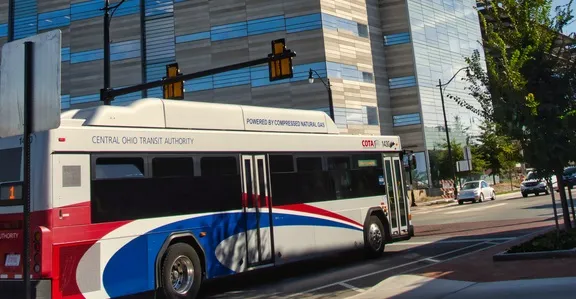One of the most congested interstates in Virginia, US, is to get an Active Traffic Management (ATM) system. The Virginia Department of Transportation (VDOT) has selected TransCore, a division of Roper Industries, to design and build its I-66 ATM system on northern Virginia’s main highway into the District of Columbia. The US$34 million contract is 90 percent federally funded and will support thirty-four miles of highway from the District of Columbia to Gainesville US-29 in Prince William County. The projec
February 15, 2013
Read time: 2 mins
One of the most congested interstates in Virginia, US, is to get an Active Traffic Management (ATM) system. The 1747 Virginia Department of Transportation (VDOT) has selected 139 Transcore, a division of 7018 Roper Industries, to design and build its I-66 ATM system on northern Virginia’s main highway into the District of Columbia.
The US$34 million contract is 90 percent federally funded and will support thirty-four miles of highway from the District of Columbia to Gainesville US-29 in Prince William County. The project is scheduled to be operational by the fall of 2014.
Due to limited right-of-way and construction funding, employing active traffic management technology can optimise mobility along the corridor by more effectively managing the congested conditions and increase safety, and reduce fuel consumption.
The active traffic management system will continuously monitor traffic and roadway conditions around the clock, collecting data using roadway monitoring equipment such as vehicle detection sensors and closed-circuit television cameras. The system will use such techniques as lane control signal systems, adaptive ramp metering, enhanced detection and camera systems, lane management systems, and queue warning systems. Active traffic management systems have been used throughout Europe for the last decade, but Transcore says this is a relatively new concept in the United States.
Benefits of the I-66 ATM system for motorists include: dynamic message and lane control signing advising motorists of incidents and delays by providing direction on lanes that are usable, and guidance on merging traffic; expanded use of shoulder lanes regardless of time of day in response to incidents and to manage traffic; improved monitoring of the roadway to provide quicker response by transportation, safety and law enforcement personnel.
TransCore, serving as prime contractor, will provide turnkey ITS design, construction, integration and testing services for the program. Once complete, operation of the system will be managed by the Virginia DOT Public Safety Transportation Operations Center.
“TransCore remains at the forefront of providing the most innovative intelligent transportation systems to improve trip reliability and maximise roadway capacity across our nation’s infrastructure,” commented Tim Fischer, TransCore’s senior vice president. “We’re pleased to support VDOT as it undertakes such a signature ITS project in the country."
The US$34 million contract is 90 percent federally funded and will support thirty-four miles of highway from the District of Columbia to Gainesville US-29 in Prince William County. The project is scheduled to be operational by the fall of 2014.
Due to limited right-of-way and construction funding, employing active traffic management technology can optimise mobility along the corridor by more effectively managing the congested conditions and increase safety, and reduce fuel consumption.
The active traffic management system will continuously monitor traffic and roadway conditions around the clock, collecting data using roadway monitoring equipment such as vehicle detection sensors and closed-circuit television cameras. The system will use such techniques as lane control signal systems, adaptive ramp metering, enhanced detection and camera systems, lane management systems, and queue warning systems. Active traffic management systems have been used throughout Europe for the last decade, but Transcore says this is a relatively new concept in the United States.
Benefits of the I-66 ATM system for motorists include: dynamic message and lane control signing advising motorists of incidents and delays by providing direction on lanes that are usable, and guidance on merging traffic; expanded use of shoulder lanes regardless of time of day in response to incidents and to manage traffic; improved monitoring of the roadway to provide quicker response by transportation, safety and law enforcement personnel.
TransCore, serving as prime contractor, will provide turnkey ITS design, construction, integration and testing services for the program. Once complete, operation of the system will be managed by the Virginia DOT Public Safety Transportation Operations Center.
“TransCore remains at the forefront of providing the most innovative intelligent transportation systems to improve trip reliability and maximise roadway capacity across our nation’s infrastructure,” commented Tim Fischer, TransCore’s senior vice president. “We’re pleased to support VDOT as it undertakes such a signature ITS project in the country."









